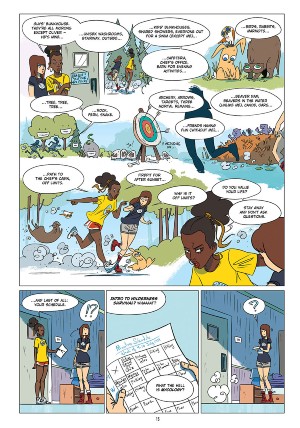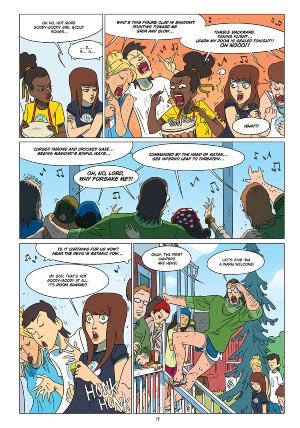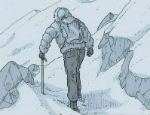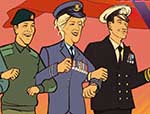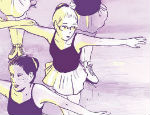 Elodie – a character carrying some serious teenage angst – is the way in which Axelle Lenoir transports us to a summer camp in ’90s Canada in the pages of Camp Spirit. Containing some mysterious elements this wholesome book draws together friendship and adventure into one neat package. The story starts with Elodie being upset that her mother is forcing her to go to camp as a counsellor. Despite her reluctance and general fear of the outdoors, though, she ends up having the adventure of a lifetime.
Elodie – a character carrying some serious teenage angst – is the way in which Axelle Lenoir transports us to a summer camp in ’90s Canada in the pages of Camp Spirit. Containing some mysterious elements this wholesome book draws together friendship and adventure into one neat package. The story starts with Elodie being upset that her mother is forcing her to go to camp as a counsellor. Despite her reluctance and general fear of the outdoors, though, she ends up having the adventure of a lifetime.
With expressive artwork Lenoir captures a whole range of emotions throughout, particularly for comedic effect. This is especially evident when the Camp Chief is introduced, his character possessing an energy that works very well with exaggerated expressions. These emotions cause a sense of motion throughout the characters’ bodies, creating a lively collection of cast members. Each background contains detailed posters and memorabilia used to express the characters’ interests. For example, a Snoopy calendar can be seen it the background at the start creating wider information about characters and making the world appear richer and more vibrant.
When presenting information during Elodie’s introduction to the summer camp, Lenoir chooses to remove panel borders, creating the idea of the camp’s elements as existing as one, piling on top of each other. This ensures there is a quick-paced introduction to the location’s features. Throughout, the use of colour is beautiful and vibrant emphasising the story’s tone. The dappled light used within the forest scenes, for example, creates a sense of light warmth within the woodland sequences.
As a camp counsellor Elodie has to look after several children within the camp, all of whom have distinct personalities, even those who are not part of Elodie’s group. The portrayal of the children is both comedic and exaggerated – they are enthusiastic with a constant barrage of questions whilst disliking the majority of adults. The dialogue between Elodie and the counsellors is particularly entertaining featuring age-typical teasing; her relationship with Catherine throughout is a particular focal point.
The story focuses on how she begins to open up and interact with people, including the campers and other counsellors. Everyday relationships being established and built upon, showing how these relationships may grow or develop by the end of summer in a realistic way. Therefore, throughout the story we see the growth of lifelong friendships. Overall, the story and art of Camp Spirit has a nostalgic feel, emphasising the idea of long childhood summers and the fear of growing up and moving on.
Axelle Lenoir (W/A) • Top Shelf Productions/IDW Publishing, $19.99
Review by Holly Raidl





